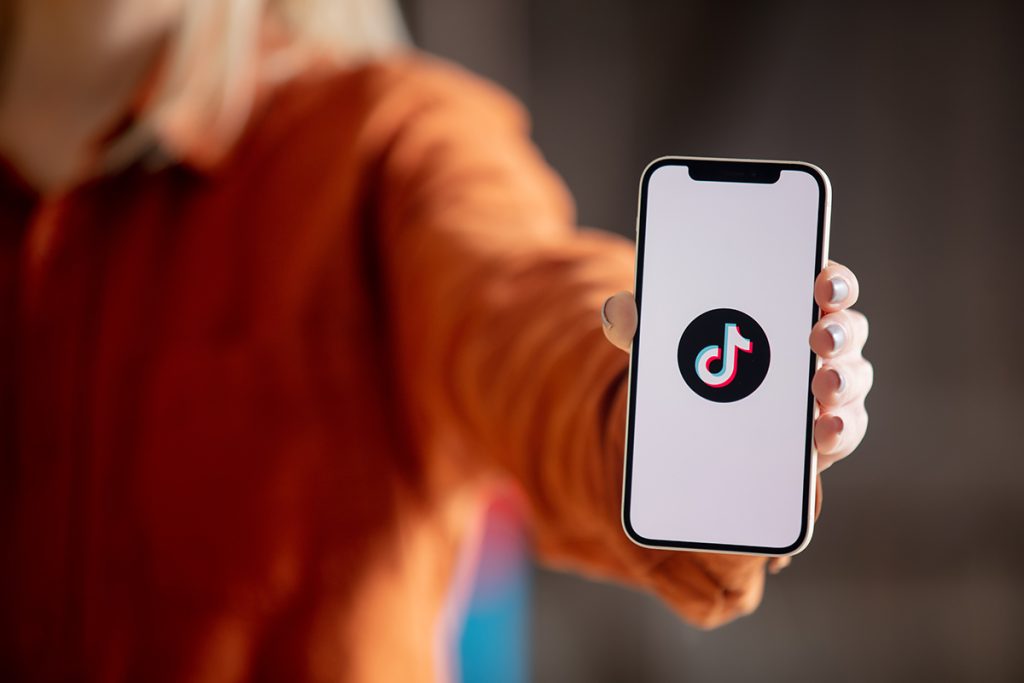Innovation often doesn’t start with a great idea at all

One of the biggest myths about innovation is that it starts with a brilliant idea. However, nothing could be further from the truth, according to the Dutch innovation expert Simone van Neerven. Meaningful innovations often start with a good dose of amazement. And wonder often starts with observing and looking with different eyes.
In the dictionary, observing is described as ‘noticing or perceiving something and registering it as significant’. Innovation therefore often starts with an observation.
One of the most famous examples is that of Isaac Newton, who was resting under an apple tree when an apple fell on top of his head and he wondered why apples fall down. While we’re not sure if he was actually sitting under that apple tree, we do know that his observation of falling apples led to the laws of gravity.
And there are many more similar examples.

The origins of TikTok
Alex Zhu, a Chinese tech entrepreneur, was still reeling from his failed venture to launch an app where people could learn from each other through short videos. But most people turned out not to need this software at all.
There is an essential difference between looking and observing. Seeing is passive while observation is active.
While sitting across from a group of teenagers on a train in Silicon Valley, he became fascinated with how they used their cell phones. He saw that they spent half their time listening to music and the other half busy making videos and selfies that they then showed to each other.
He thought that an app that combines these elements might be a success. This was the start of Musical.ly, an app which later became the tremendously popular TikTok.

Four ways to observe better
But doesn’t observation just happen by default? Because when your eyes are open, you observe, right? There is an essential difference between looking and observing. Seeing is passive while observation is active. When you observe, you assume a heightened state of awareness or wakefulness. You look at everything without explicitly looking for anything.
There are four simple ways that teach you to better spot opportunities for innovation.
Don’t take anything for granted
Sometimes we are so used to doing things a certain way that we don’t even consider them clumsy. And that is exactly where there is a lot of potential for innovation.
It’s almost unthinkable these days, but in the past you could only call home with a telephone that was corded to the same place in the house. If you wanted people to be able to leave a voicemail, you needed a separate device for that. Even when the first mobile phones were introduced, many people were extremely skeptical about their usefulness.
Look for frictions and frustrations
Inconveniences such as having to wait a long time for something or not understanding how a product or service works are clear signals that something is wrong. And they are often easy to see, if you look around you.
In the 1960s, the children’s toothbrush was just a mini version of the one adults use. But kids dropped these all the time. What was the cause of this? The handle of the children’s toothbrush was just as thin as that of the adult toothbrush, while children do not have the same dexterity and grip as adults. Oral-B saw that and was the first to introduce a special children’s toothbrush with a wider handle.
Find the workarounds
Humans are super creative and often find solutions to everyday problems. These are usually temporary solutions and therefore a great source of inspiration to arrive at a structural solution.
A classic example of this is the ketchup bottle. To get the last bit out of the bottle, people put it upside down in the cupboard. This observation led to the design of the ‘upside down’ ketchup bottle in 1991, which was later embraced by shampoo and toothpaste manufacturers, among others.
Learn from other unrelated areas
Solutions are often up for grabs, but you have to keep an open mind because they often lie outside your own usual radius. In addition, it also requires imagination to see how a solution can also be applied in a different way.
In 1970, Bernard Sadow, a senior executive at the US Luggage company, was returning from a vacation with his family and standing in line at the airport for customs clearance, he saw an airport employee effortlessly rolling by a heavy machine on wheels. That gave him the idea of how handy it would be to have wheels under his own heavy suitcases.

Do you want to be a better innovator? Then learn to observe
There are many things that look normal at first glance, but have hidden opportunities. Learning to open your eyes and observe even seemingly normal things can lead to the next breakthrough. But that requires an open mind, like Isaac Newton who wondered what he had observed and Alex Zhu who carefully observed teenagers.



















